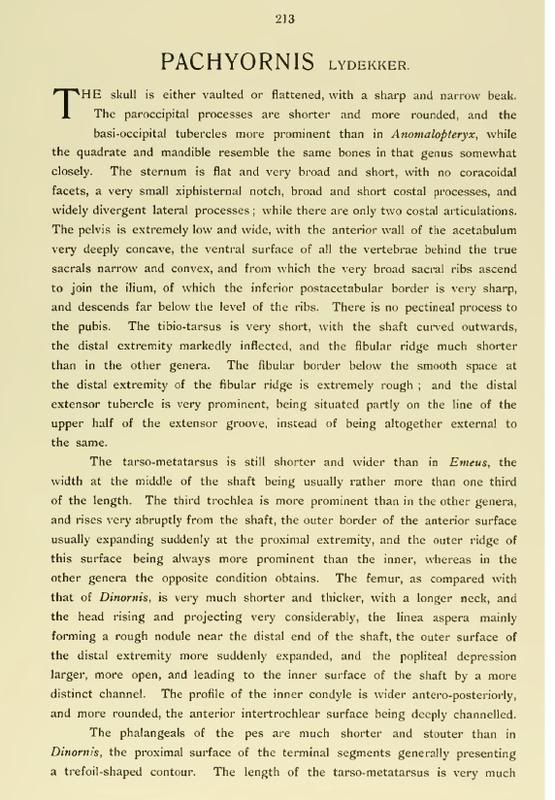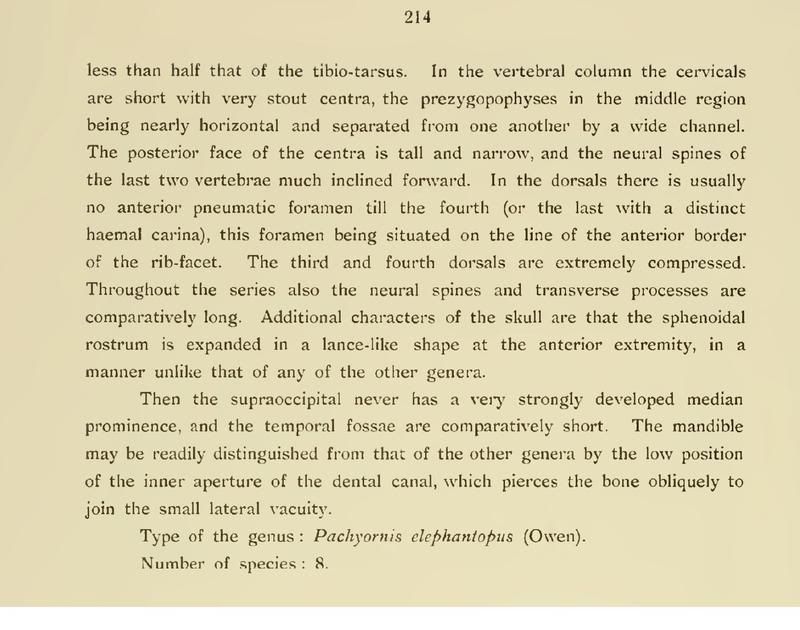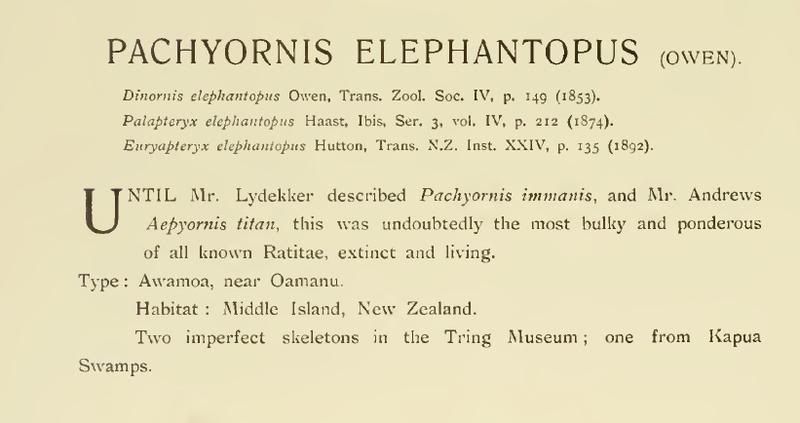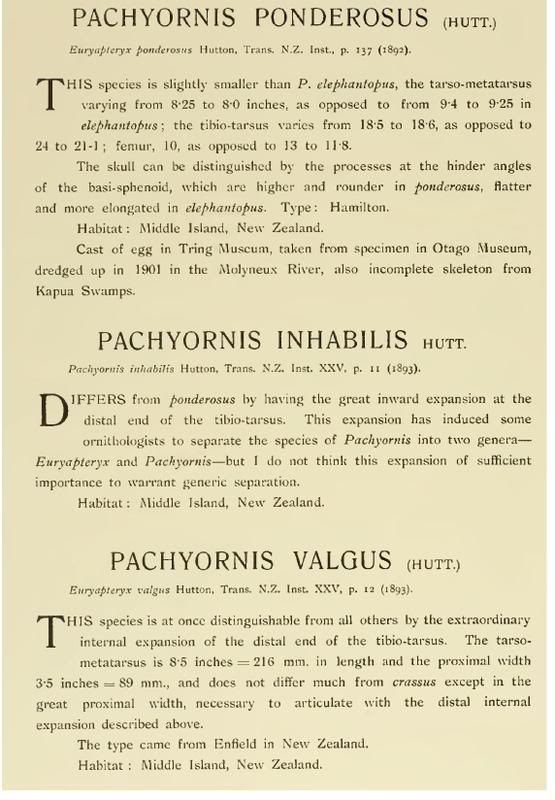|
|
Post by Melanie on Nov 6, 2005 2:06:27 GMT
This massive species was discovered by W.B.D. Mantell at Awamoa, near Oamaru, and the bones were taken by him to England. A skeleton was built up of the bones of several individual birds and placed on view in the British Musem. This bird was described by Richard Owen as Dinornis elephantopus. The Heavy–footed Moa was massive for its height, being the most thick set Moa. It was about 1.8 metres tall. Its short thick legs supported a body weighing as much as 145 kilograms. The bills of Moa are adapted to cut twigs and leaves. The bills of anomalopertyx were better constructed for cutting and probably functioned like secaturs. They would have been able to give a nasty bite. The bird was widespread in the South Island east of the Alps   |
|
|
|
Post by another specialist on Nov 6, 2005 7:29:43 GMT
|
|
|
|
Post by another specialist on Nov 6, 2005 7:31:40 GMT
|
|
|
|
Post by another specialist on Nov 6, 2005 7:34:01 GMT
Heavy-footed moa Pachyornis elephantopus 'Canterbury/Otago'
[new unamed diverging species] Extinct
Heavy-footed moa Pachyornis elephantopus 'Southland'
[new unamed diverging species] Extinct
|
|
|
|
Post by another specialist on Nov 8, 2005 14:15:26 GMT
|
|
|
|
Post by RSN on Jan 15, 2006 20:11:16 GMT
|
|
|
|
Post by another specialist on Feb 23, 2006 8:00:33 GMT
RSN Its the same image as i've posted previously just mine is a transparent version
|
|
|
|
Post by Carlos on Jan 2, 2007 12:17:49 GMT
|
|
|
|
Post by RSN on Mar 25, 2007 21:45:44 GMT
I don't know why, but the link didn't open here (and in a friend's PC not too). When I type ''extinct'' in the search box, nothing happen. Where I can find all the book pictures together?
|
|
|
|
Post by another specialist on Mar 26, 2007 7:44:45 GMT
|
|
|
|
Post by RSN on Mar 31, 2007 17:46:40 GMT
Thanks for the links, Another Specialist!!
|
|
|
|
Post by another specialist on Jul 24, 2008 16:20:20 GMT
  Extinct birds : an attempt to unite in one volume a short account of those birds which have become extinct in historical times : that is, within the last six or seven hundred years : to which are added a few which still exist, but are on the verge of extinction (1907) |
|
|
|
Post by another specialist on Jul 24, 2008 16:24:12 GMT
 Extinct birds : an attempt to unite in one volume a short account of those birds which have become extinct in historical times : that is, within the last six or seven hundred years : to which are added a few which still exist, but are on the verge of extinction (1907) |
|
|
|
Post by another specialist on Aug 9, 2008 3:56:55 GMT
Pachyornis immanis = Pachyornis elephantopus Pachyornis rothschildi = ? Pachyornis elephantopus or Euryapteryx geranoides Pachyornis ponderosus = Pachyornis elephantopus Pachyornis inhabilis = Pachyornis elephantopus Pachyornis valgus = Pachyornis elephantopus   Extinct birds : an attempt to unite in one volume a short account of those birds which have become extinct in historical times : that is, within the last six or seven hundred years : to which are added a few which still exist, but are on the verge of extinction (1907) |
|
Deleted
Deleted Member
Posts: 0
|
Post by Deleted on Dec 18, 2008 21:54:33 GMT
Pachyornis elephantopus  Photo made by me in the Senckenberg-Museum in Frankfurt a. Main / Germany. |
|
|
|
Post by another specialist on May 1, 2009 12:19:53 GMT
My own photos taken in the Natural History Museum at Tring - April 30 2009   |
|
|
|
Post by surroundx on Mar 3, 2013 10:49:11 GMT
|
|
|
|
Post by surroundx on Oct 20, 2013 14:30:11 GMT
|
|
|
|
Post by surroundx on Feb 23, 2015 12:18:44 GMT
Alexander, R. M. (1983). On the massive legs of a moa (Pachyornis elephantopus, Dinornithes). Journal of Zoology (London) 201(3): 363-376. [ Abstract] |
|
|
|
Post by surroundx on Mar 15, 2015 8:55:05 GMT
|
|